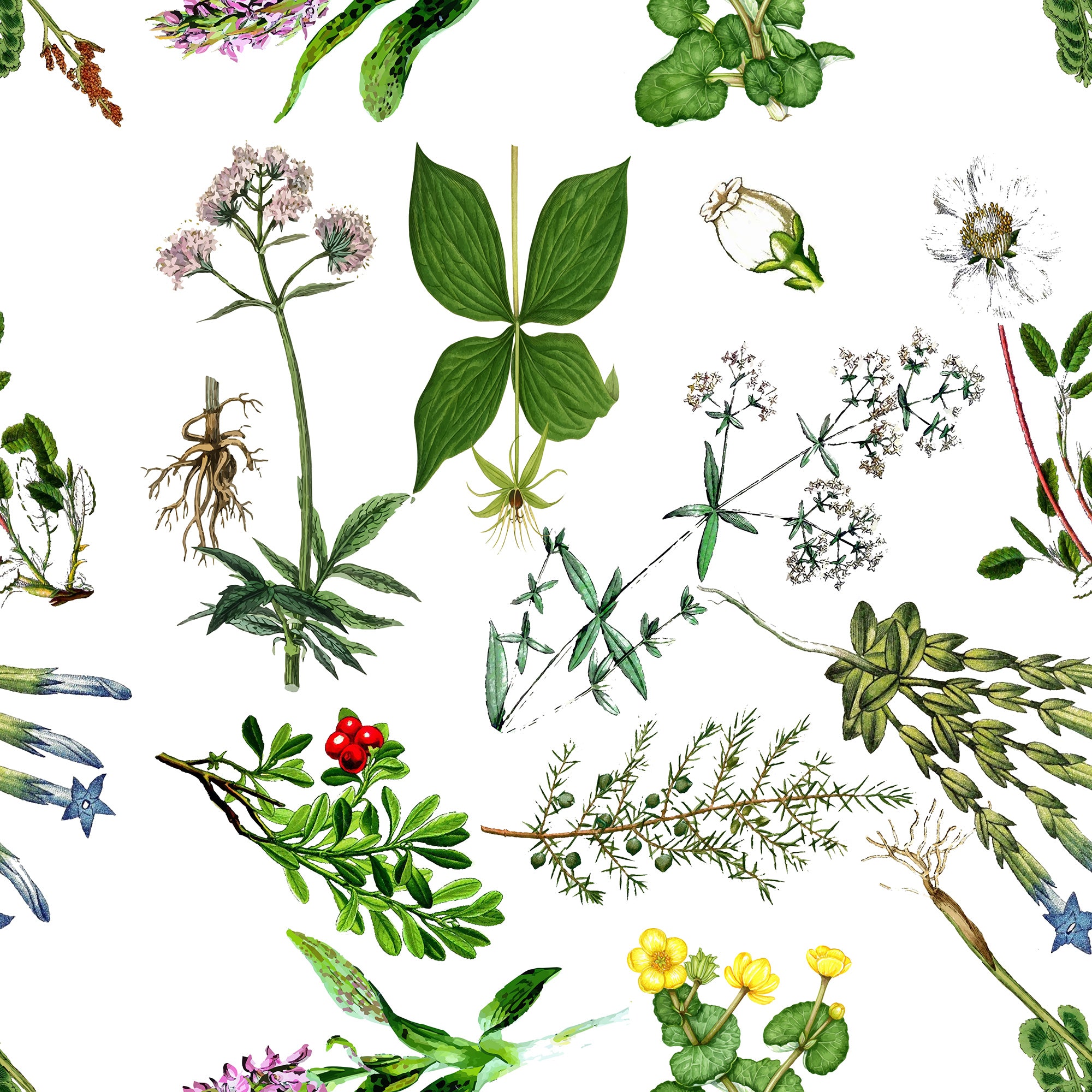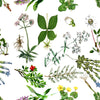Magic and Mystery of the Icelandic Flora


The Icelandic Magical Flora pattern consists of 11 Icelandic plants who are known for their magical essence in one form or another. Some of these are also known for their healing powers and some were traditionally used to dye fibres but all of these have been associated with witchcraft, superstition and/or folk lore in Iceland.
The plants used in this pattern are:
Brönugras ( Dactylorhiza Maculata )
This plant holds a great deal of belief behind it. This prominent euphoric fertility plant has been used to awaken love and lust not just amongst people but also between people and giants. In the saga of Hálfdanar Brönufóstra, a legendary saga about Halfdan the son of the king Hringr of Denmark, the story of how the Seiðwoman (witch) Brana used the plant to awaken the love of the King of Englands daughter Marsibil, towards Hálfdán. The saga can be found here: https://www.snerpa.is/net/forn/halfd-br.htm
Dýragras (Gentiana Nivalis)
This plant isn´t known for magical purposes but it is known that this plant grows where Huldufólk as we call them in Iceland, live.
Ferlaufungur (Paris Quadrifolia)
This little poisonous plant is associated with wolves in the northern countries. A lot of superstition is associated with it and it is believed its magical powers can open all things locked. The root of the plant has many healing powers, including acting as an antidote against arsenic poisoning. In a twist of nature, the berries from this plant are themselves poisonous.
Einir (Juniperus Communis)
This plant was often burned in the room where childbirth was occurring as the smell from it would keep the devil away and provide protection for both the mother and the child. This plant has a great array of healing power for all kinds of ailments. This tree is associated with fertility but if you used this three to build a house then that house would burn down.
Fjallafoxgras (P. Alpinum)
If you sew this grass into the wool under the belly of a sheep then the sheep will be safe from foxes.
Tungljurt (Botyrychium Lunaria)
This moonlike plant has the powers to open locks. It is also used to secure a good birth when a woman was giving birth so the plant would be put next to the woman. It had to be removed before the child emerged though. It is also believed that if a horse steps onto this plant, it will lose its shoe.
Krossmaðra (Galium Boreali)
In many places in the North, it is believed that if you scatter her flowers on the floor or have someone sit on her flowers, it would entice those involved into arguments and even battle against each other.
Sortulyng (Arctostaphylos Uva-Ursi)
According to an old witchcraft book dating back to the 15th century, if you carry a little of this plant on you in a little pouch, you will be protected against ghosts – unless you mention the ghost by name. This plant also has some medical attributes and was used to make writing ink from it. It is a great plant to use to colour fibres black and was commonly used to dye fabric in Iceland during the Middle ages.
Holtasóley (Dryas Octopetala)
Also known as Þjófarót which means “Thiefroot”. Once the flower has bloomed and you are left with hairy strands. Superstition has it that she grows where a thief has been hanged and she grows from the fluids from the corpse. The root itself is believed to attract silver coins from those buried in the ground (hence the name Thiefroot) but to activate its power, you must steal a coin from a poor widow at the exact moment during a church sermon and it must be on one of the three greatest celebrations of the year. The root will only draw the same value coin as stolen. The problem obtaining a root from this flower is however that once you tear it away from the ground, all creatures who hear it split will drop dead. The leaves are used in broth.
Hofsóley (Caltha Palustris)
Pick this flower when the Sun is in the time of the lion (13th July to 12th august) and bathe it in the blood of a lamb, wrap it together with a tooth from a wolf into a leaf of a Laurus. If you carry this parcel on you, nobody will be able to speak to you words of anything but kindness. If someone steals from you and you place the parcel on your eyes, you will see who the thief is and all his actions. If you put this flower into a home where the woman is wanting to leave a marriage, she is unable to leave until the flower has been removed. Superstition amongst farmers also says that once this plant blooms, it is safe to let the cows out and once her bloom falls, it is time to hay.
Garðabrúða (Valeriana Officinalis)
A very rare plant in Iceland but more common in other European countries. Its root was believed to be effective to fight pandemics. The smell from this flower is believed to be euphoric and boost lust and love between lovers.
Click here to view the collection which ranges from Button-down mens shirts, dresses, tote bags etc.





